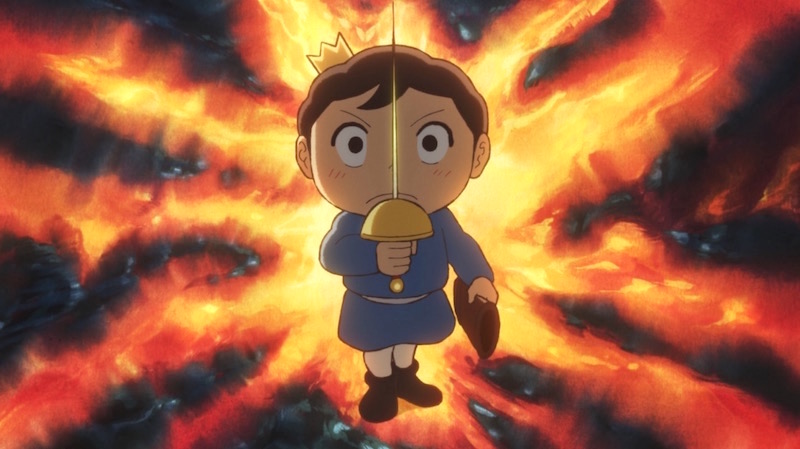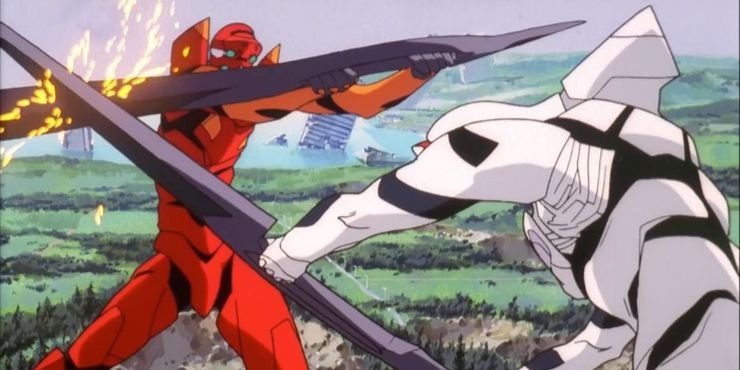FEATURE: Heavy Is The Head — The Importance Of Weight In Ranking of Kings

From the very first episode, WIT Studio's adaptation of Ranking of Kings stands out as a visual feast. Not because it's flashy or full of overly stylized and dramatic cuts. It's the palpable weight of the animation — from subtle movements to broad swings — that lends a sense of urgency to even the lightest dramatic strokes and narrative turnabouts. You don't have to be the number one king in the land to see how adding a sense of volume to your characters can create more dynamic and memorable results. In the case of Ranking of Kings, the animation style also serves to reinforce its themes and create a counterbalance for the skill set of 2022 Best Boy Anime Awards winner and would-be king Bojji.

When it comes to weight in animation, and why it matters in the slightest, there are plenty of examples to turn to, both classic and contemporary. Look at something like Hideaki Anno's 1997 film End of Evangelion, for instance. The moment Asuka trudges into the water to take on the Mass Production Evas — in what is no doubt one of the most beautifully hopeless action scenes in anime — it looks and feels like she's in control of a towering robot. Because she is! When she picks up one of their Spear of Longinus replicas, Evangelion Unit-02 lurches forward with great resistance before shifting the full weight of the blade and hitting it against another with a mighty CLANG. Asuka feels it, the audience feels it, and it screams onto the screen as something tangible. The whole film is heavy in every sense of the word, but moments like this stand out because they're so substantial.

Image via Netflix
Another go-to comparison is the boxing action in two series that are similar on the surface but thematically disparate. TMS Entertainment's MEGALOBOX depicts the struggle of one man as he aims to dominate an increasingly robotic world of boxing with his bare fists. The show itself is great, but despite literally being about man versus machine, the actual squared circle combat lacks impact. On the other hand, Madhouse's anime adaptation of George Morikawa's Hajime no Ippo manga is exactly as heavy-hitting as it should be, and every bout serves to raise the stakes visually in tandem with its narrative. Whether it's some buoyant footwork or a climactic Dempsey Roll, you can feel the movements in the ring.

Ranking of Kings has a lot in common with that. When our storybook tale first begins, we're introduced to some nebulous concepts about the titular rankings, where current king Bosse stands on the charts, and a hint or two about who else may be in the running. Then we're quickly thrust into the story of Bojji, who aims for similar heights despite his lack thereof. Any other details about the rankings are clearly not that important in the grand scheme of things. All you need to know is this: Bosse Big and Strong. Bojji Small and Weak. The world is enveloped within the aura of the former's status — making Bojji's gradual progression and the walls that rise before it seem that much more insurmountable — and WIT Studio's production reflects that.

Whether it's the way Dorshe — one of the kingdom's four guardians who is also known as The Queen's Shield — pummels a rampaging monster or the way a massive three-headed snake named Mitsumata moves in a manner that fits its colossal height, the visual representation of weight intertwines itself with the overarching narrative. It underscores what makes Bojji such a special king-to-be, as we discover early on that any deficiencies he may have in strength are more than made up for in speed and dexterity. WIT lends so much mass to almost everything in the show except Bojji and his shadowy pal Kage so that their idiosyncratic movements shine that much brighter. Bojji is water, cascading across stubborn rocks and eroding them over time.
This is on full display when we first see Bojji's singular approach to combat. While his more physically capable half-brother Daida can take Serpent Master Bebin's teachings at face value and strike at Bojji with pure force, Bojji is able to sprint and leap and dodge and roll, turning Daida's movements into trivial attacks that do nothing more than waste energy. Bojji is reprimanded for this during a sparring bout, not because it's actually against any clear rules, but because it's embarrassing as hell for Daida. From this scene and the occasional flashback to his even younger and smaller days, it's clear that Bojji is a survivor first and foremost. All the strength in the world can't drill those instincts into someone who focuses on power above everything else, and is that really all it takes to be worthy of the throne?

Weight in animation isn't just about making punches look like they actually hurt. It's about making a world feel alive. It's about fully realizing the people and objects within it, and it's about consequences. The perils around you are that much more potent when you can sense their heft, but so is the love. With weight comes life and with life comes humanity. That's what really shines through in Ranking of Kings. There aren’t easy answers to character motivations, and sometimes there aren’t even answers at all; at least not yet. That's what makes this show special, and it’s why Bojji will always feel the weight of a crown atop his head whether he makes it as a king or not.
Joseph Luster is the Games and Web editor at Otaku USA Magazine. You can read his comics at subhumanzoids. Follow him on Twitter @Moldilox.
Do you love writing? Do you love anime? If you have an idea for a features story, pitch it to Crunchyroll Features!
from Latest in Anime News by Crunchyroll! https://ift.tt/Habmidu

Comments
Post a Comment